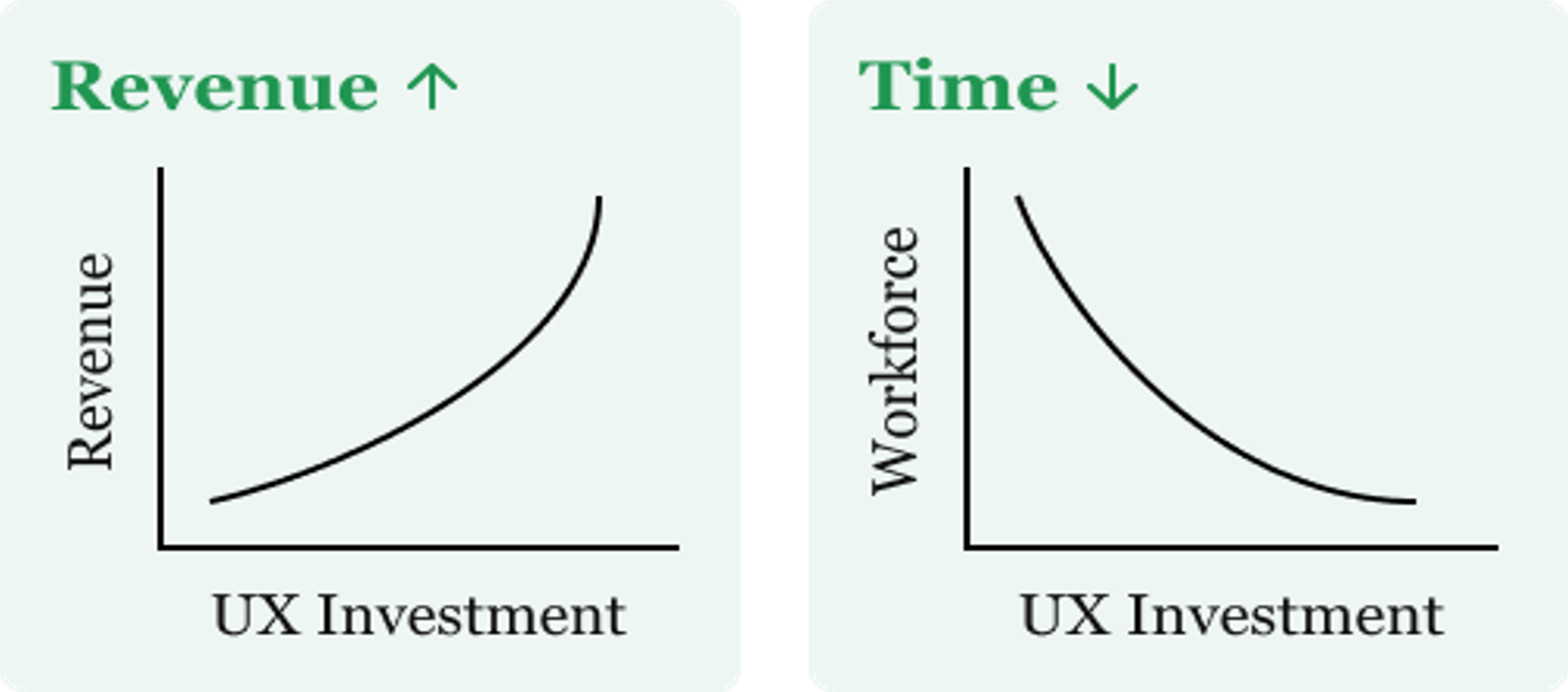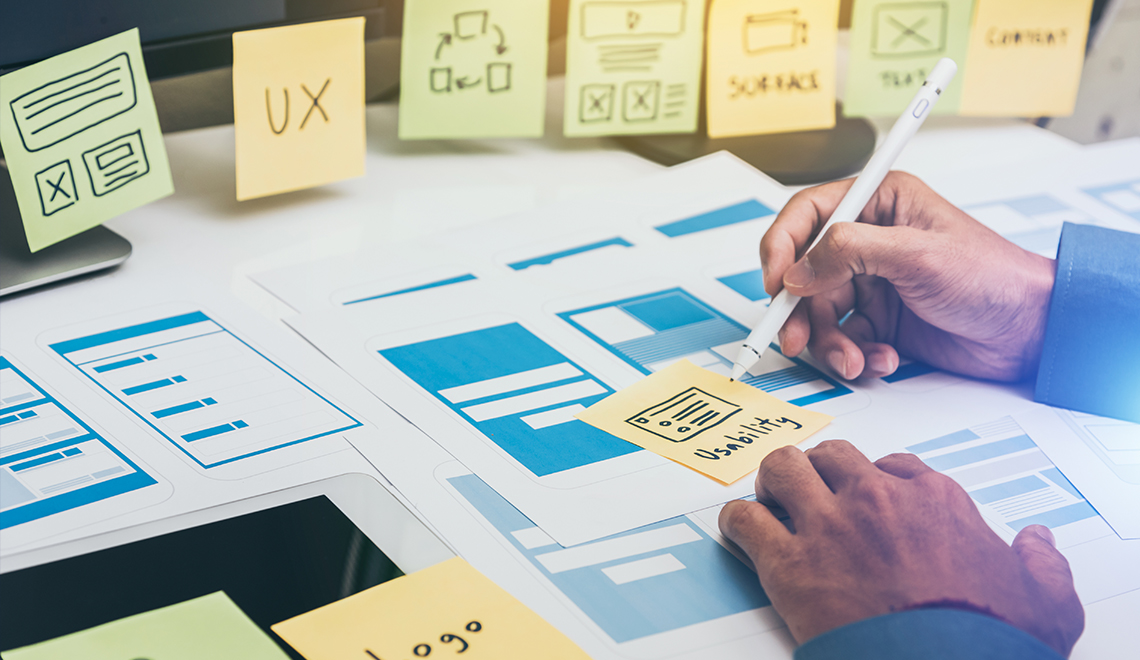



The adoption of User Experience (UX) across customer channels has been on the rise in most organizations. Based on the results of many UX engagements, we believe that UX is a critical factor in any successful Digital Transformation journey. So, should you be investing in UX because it’s trending or only for good returns?
Top UX designer Frank Chimero once said: “People that ignore design, ignore people.”
The real reason why any business should invest in UX is that they care about the people who support their very existence. If they don’t enjoy and benefit from interacting with your brand, you may as well close up shop. We will dive deeper into this theory through examples. But first, can you relate to these questions?
- Should I enhance our application as per current trends?
- How can I make it more user-friendly for every type of customer?
- Why does it take so much time to design a few screens?
- How and where can I get good data on UX?
- Isn’t calculating the ROI of any UX change part guesswork?
In his book, “Principles of Software Engineering Management,” Tom Gilb says that every dollar spent on user experience (UX) yields an ROI between $2 and $100. In this blog, we will be discussing the impact of UX on business operations and the potential returns any business can expect from UX done right.
Basics - What is UX ROI?
Return on Investment (ROI) is a financial metric used to analyze the payback (usually a percentage) on an investment over a period of time. But calculating the ROI of UX is more about demonstrating that the design is improving the user experience in a way that has a positive impact on business goals – whether in terms of revenue or other critical functions.
Here’s an example:
If you want to book a homestay, which application comes to mind? I’m guessing “Airbnb.” But did you know that in 2009, the Airbnb startup nearly went bankrupt? Revenue was a frighteningly low $200 per week. But a small UX redesign helped them get back on track.
For businesses that are able to provide customers with a seamless digital experience across multiple online channels, the ROI improves with increased customer satisfaction. A consistent user experience across platforms not only helps customers get accustomed to digital services, but also strengthens their loyalty to the brand that made their transition to digital services easy and enjoyable.
Another scenario, where UX can help you reduce support inquiries:
Imagine having a chatbot in your application that makes your team accessible to quick questions from your employees. Questions like
“I can’t find...”
“How do I perform.... action”
“Is it possible to...”
And who doesn’t like 24x7 service? The experience of interacting with a well-constructed chatbot can be more efficient and satisfying than waiting for a human responder. Employees are also more likely to ask clarifying questions with ‘friendly’ chatbots, so bounce rates (percentage of visitors who enter the application then leave) will be lower. Moreover, chatbots capture information that can provide valuable insights into your customers, support quality, and product or application. You can also look at conversation logs to determine common questions and update the design accordingly. By reducing the questions that support teams receive, you can free up support members to focus on more pressing issues, rather than servicing clients with similar questions over and over again.
As compelling as these examples may be, we should always keep in mind that UX doesn’t show sudden and exponential growth in terms of revenue or customer retention. For this very reason, realistic estimation of ROI becomes necessary to evaluate and compare different investment options.
How to Calculate ROI?
ROI for business is generally computed as per the defined KPIs (Key Performance Indicators). However, most of the time it's practically impossible to calculate the ROI of a UX design at the start of the project. After including the obvious upfront costs of software tools, time/effort, etc., the overhead metrics are mostly assumed and include certain factors calculated over time using various tried and tested methods (examples below).
Once the product is released the choice of applicable ROI metrics is predicated on what business metrics are most important for achieving the aligned goals.
Treat ROI as Estimation, Not Prediction. They can't (and don’t need to be) perfect.
- Nielsen Norman
Established metrics such as conversion rate, Single Usability Metric (SUM), drop-off rate, bounce rate, Net Promoter Score (NPS) and others can provide metrics and indicators of the effectiveness of a new or enhanced UX design. Read on for an example of conversion rate at the end of this blog.
Potential Returns of User Experience (UX)
As per my research and project experiences, a stellar user experience can provide the following returns to a business:
- Increases user satisfaction and customer spend
- Helps with user retention, reducing acquisition costs
- Enables faster and continued user adoption
- Decreases user support overhead
- Optimizes development time and cost
- Maximizes revenue generation opportunities
- Reduces onboarding time and training costs
- Prevents the development of unwanted features/products

Different UX activities can offer different ROIs
It’s important to mention that successful UX design and implementation is a team effort. Different disciplines play a huge role in the scoping, design, delivery, and marketing of a product. We also have a lot of help in the process from our Engineering Team and Product Owners.
I hope this short article takes some of the angst out of estimating the ROI of UX. And if anyone challenges your reasoning, kindly refer them to this blog.

Let’s Hear From a Xoriant Leader
A conversation with a Xoriant technology leader who has been recommending modern UX design for the last 11 years for his projects led to some interesting insights. To narrow the scope a bit, we focused on a recently completed project that allows our client’s employees to regularly update their skills and resume in order to match them with new opportunities.
First, I needed to understand what was invested before the team could calculate returns.
1. What were the investments made while building the application re: money and effort?
Moneywise: None, the team used whatever they already had.
Efforts: 3 full-time resources for development over a period of 6 months + 1 designer.
2. Why did you consider UX design for this project, and what kind of ROI did you expect in terms of UX?
First and foremost, have a clear vision of what’s needed and a focus on better requirements gathering. The new UX was expected to:
- Reduce development efforts on UI rework.
- Avoid usability challenges faced by users.
- Achieve faster user adoption.
- Save time on UAT testing with investment in UX design.
- Increase customer brand stickiness.
3. What were the results after the application release?
The organization’s goal was to have the updated skills and resumes of all the employees online by June 2021.
Actual Target: 100% employees to update skills and resumes.
Margins: 10-15% considering employees on client projects or other locations who might not have the access to the application.
ROI calculation using conversion rate,
Conversion rate = (No. of Updates / Total Visitors) x 100
2984 users visited the application and 2752 of them updated their skills, thus the conversion rate percentage of the updates can be calculated as
(2752/2984) x 100 = 92%.
Achieved Target: Within 5 months after implementing the application we had gathered the skills and resumes of more than 90% of employees and still going strong.
The Revenue Angle
The design and development of this application reduces:
- The amount of time it takes for employees to update their skills and resume.
- The time spent by other employees in following up to get updated skills and resumes from others.
- The time spent by Project Managers to ask for updated details every time they need one from an employee and every other employee who is involved in the process.
To calculate real savings, you would multiply the time reduction by average hourly pay, the number of employees, and the frequency of the task to render annual cost savings. In other words, by improving the efficiency of our client’s employee skills application, we estimate that we’re not only improving productivity and talent utilization, but we’re investing resources in higher-return projects that would otherwise have been used to support an inefficient task.
Final Thoughts
UX design done properly can deliver excellent ROI that goes well beyond the immediate benefits to the user. At Xoriant, our view is that UX design shouldn’t always be scrutinized as an expense, but rather valued through its ability to attract, engage, influence, and acquire/retain a paying user loyal to your product or brand.
UX helps create a vision and a road map that will both delight users and provide measurable business results. Spending a little time and money on drafting an enjoyable user experience with appropriate user research and testing of digital products can translate into major revenue growth.
Looking to modernize customer experiences with a rich user experience and modern interface? With Xoriant UX experts, you’ll stay ahead of the curve by investing in the latest research and next-gen technologies to enable your team to exceed customer and market expectations.
To discuss how Xoriant helps improve ROI for businesses with amazing UX,




 View Previous Blog
View Previous Blog





